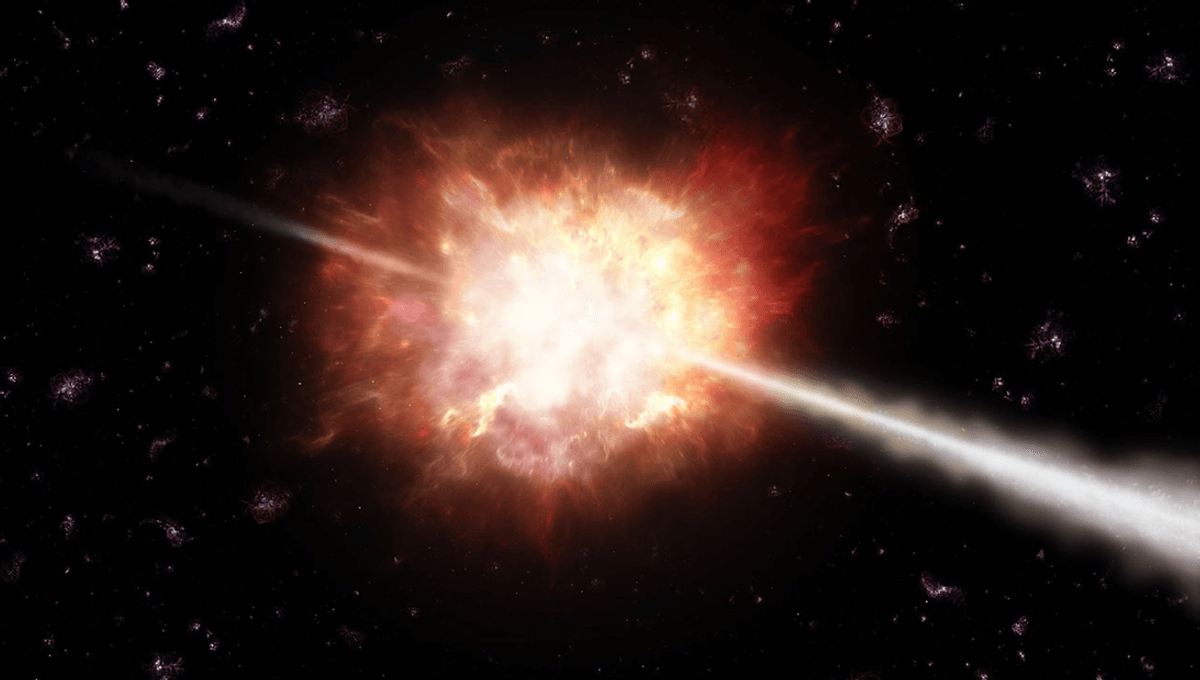
The more we search among the stars, the more we find potentially habitable planets. And yet to date, we have not found any conclusive signs of intelligent civilizations out there in the cosmos, begging the question: Where is everybody?
This is the basic question of the Fermi Paradox, to which scientists, philosophers, and science fiction writers have proposed a number of explanations. They range from the benign (maybe we haven’t searched for long enough yet, or are searching for the wrong types of signs, given our own technological immaturity) to the profoundly terrifying.
One that fits somewhere in the middle is the idea that conditions for life and intelligent civilizations to evolve have only just (in cosmological timescales) started to emerge.
“The rate of gamma-ray bursts almost certainly was higher in the past than in the present,” James Annis of the Experimental Astrophysics Group at the Fermi National Accelerator Laboratory wrote in a 1999 paper, originally published in the Journal of the British Interplanetary Society. “The leading contender for the cause of gamma-ray burst is colliding neutron stars. These would have been born in binary systems and fairly rapidly spiral inward. Their numbers reflect the star formation history of the universe, which peaked 10 billion years ago and has declined since.”
While this might sound like a relatively benign solution to the great silence, it implies that earlier on in the evolution of the universe life was constantly being wiped out before intelligent life had the chance to emerge. What’s more, the extinctions would take place on a galactic scale.
“The gamma-ray burst model is therefore one where galactic scale mass-extinctions occur often. Ten billion years ago, the rate was quite high, perhaps every 3 million years,” Annis explained.
“Over time this rate slows down and now the rate is perhaps once every 220 million years. Given the premise of this model, the last such burst in our Galaxy was before the solid surface of the Earth was covered with life, 270 million years ago. These bursts are not likely to be lethal to an advanced civilization, so their effectiveness at preventing the Galaxy from being colonized lies in their effectiveness are preventing intelligent life from evolving in the first place. “
The idea may not sound testable, but if it’s correct we could find evidence for such extinctions on Earth. Gamma ray bursts have been suggested as possible driver of the Ordovician mass extinction around 450 million years ago, depleting the ozone layer and leaving life vulnerable to UV radiation. If this is correct, it could add evidence to the idea that alien life could have been similarly wiped out.
It’s bleak, but there is an upside to the idea. Now that gamma-ray bursts have calmed down a little, life has a chance to make its mark on the galaxy.
“A previously forbidden configuration is now allowed,” Annis concludes. “It is likely that intelligent life has recently sprouted up [at many] places in the Galaxy, and that at least a few are busily engaged in spreading. In another 108 years, a new equilibrium state will emerge, where the galaxy is completely filled with intelligent life.”
A copy of the 1999 paper has been posted to preprint server arXiv.
Source Link: Galactic-Scale Extinctions: A Bleak Answer To The Universe's Great Silence